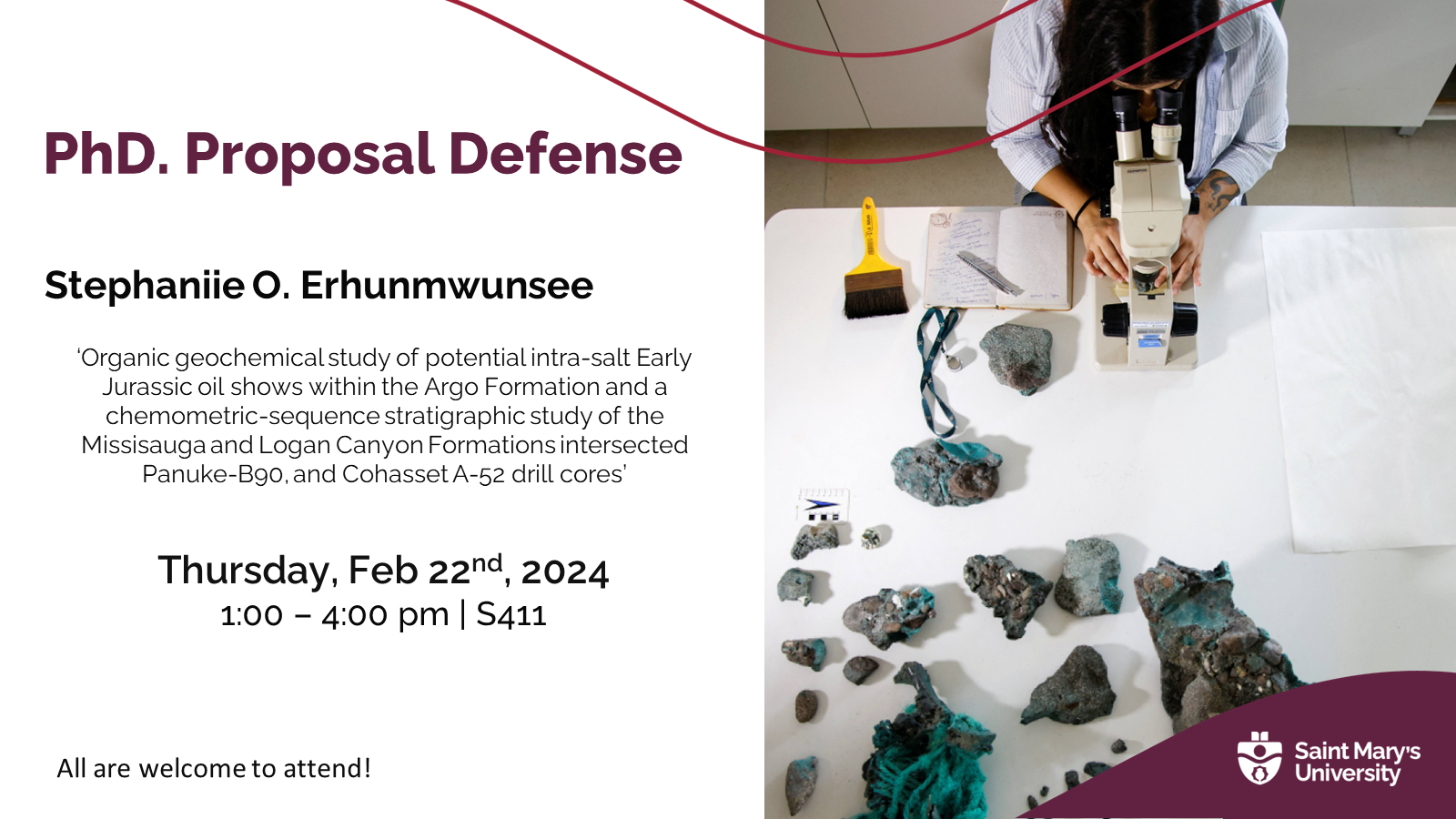PhD. Proposal Defense

Location: Science Building - 411
'Organic geochemical study of potential intra-salt Early Jurassic oil shows within the Argo Formation and a chemometric-sequence stratigraphic study of the Missisauga and Logan Canyon Formations intersected Panuke-B90, and Cohasset A-52 drill cores'
Abstract: The quest for oil and gas in Atlantic Canada has largely centered on effort to expand the Sable Island gas reserves. Nevertheless, industry interest has diminished, and all commercial production has ceased. Despite this, various signs indicate the potential existence of black oil reserves in one or more of the sub-basins. This proposal introduces three distinct studies in petroleum geochemistry and chemostratigraphy, focusing on two significant geological time intervals: the rift and early drift tectonic phase of the Scotian Margin and adjacent Grand Banks (Late Triassic-Early Jurassic); and the late Early Cretaceous (Barremian - Albian in age) of the Scotian Basin. The objective of this research is to enhance our understanding of the factors influencing organic matter preservation, petroleum generation, and the ability to predict potential reserves in the Scotian Basin. The thesis is structured into three studies, each with the primary goal of advancing technological and geochemical surveys to reduce uncertainties surrounding hydrocarbon presence in the Scotian Basin. The comprehensive approach involves the use of two-dimensional gas chromatography-mass spectrometry (GC×GC-MS), flame ionization detection (GC×GC-FID), and a multivariate chemometric technique. The initial study aims to confirm or refute the presence of oil shows in the Scotian Basins by analyzing cutting samples obtained from Argo F-38 well. The second study aims to identify and quantitatively measure the multi-molecular compositional changes in sedimentary organic matter from the Panuke B-90 well, utilizing chemometric analysis alongside multidimensional gas chromatography. The third study seeks to uncover the extent and timing of the transition from lacustrine to marine environments, with implications for the quality of source rocks and generated hydrocarbons, using the samples from the second study. Furthermore, we anticipate that the results obtained from this study will contribute to the understanding of historical depositional environments, evaluating the thermal maturity of source rocks, and identifying widely recognized hydrocarbon biomarkers. Together, these findings hold significant potential for enhancing efforts in the field of petroleum exploration.